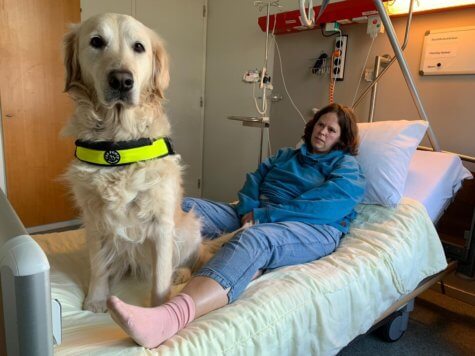UTRECHT, Netherlands — Is a dog really too dirty to enter certain places with their owners? While some locations say their “no dogs allowed” sign there for sanitary reasons, a new study reveals your average pup is probably cleaner than some of the clothes their human companions are wearing.
There are roughly 500,000 service dogs in the United States. These hard-working pups help their owners live life to the fullest. Examples include guide dogs for the blind and hearing dogs for hearing-impaired owners. However, in many instances, various stores, public spaces, and hospitals ban service dogs from entering over hygienic concerns.
Luckily, researchers at Utrecht University find humans don’t have to bar dogs from hospitals and other sensitive areas over cleanliness concerns. In many cases, the team in the Netherlands says a service dog’s paws are usually cleaner than the shoe soles of their owners.
There’s more bacteria on your shoes than your dog

Researchers took paw samples from 25 working service dogs as well as the shoe soles of their owners. Also, for the purpose of comparison, the team examined another group of family dogs and their owners as well. Study authors tested all those samples for fecal bacteria (Enterobacteriaceae) and diarrheal bacteria (Clostridium difficile).
“The dogs’ paws turned out to be cleaner than the soles of their shoes,” says Jasmijn Vos, a Utrecht Masters student, in a university release. “This makes the hygiene argument that is often used to ban assistance dogs from public locations invalid.”
Additionally, not a single dog’s paw showed any signs of diarrheal bacteria. Meanwhile, one human’s shoe sole contained Clostridium difficile.
Moreover, study authors contend that humans end up barring many service dogs from entering various areas due to nothing more than ignorance. Workers either don’t know what a service animal is, can’t recognize one, or aren’t familiar with the relevant rules. For example, in the Netherlands all service dogs should have access to public places. Still, 81 percent are routinely refused entry.
The study is published in the International Journal of Environmental Research and Public Health.
